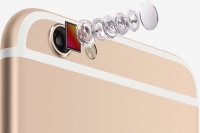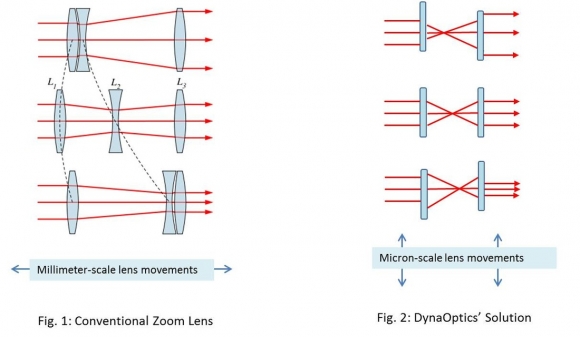Your next smartphone could sport a zoom lens thanks to DynaOptics’ new technology
posted Friday, October 3, 2014 at 2:39 PM EDT

The great thing about smartphones is that they pack combine a number of different devices into one, including a digital camera, which has basically made the compact camera obsolete in the last few years. The only downside to most smartphone cameras is that they don't offer any optical zoom in order to keep the overall size down.
Without optical zoom, we have to rely on digital zoom (or rather, cropping and then upscaling an image) in order to get closer to things, at the expense of image quality. But why can't we have optical zoom in our smartphones? Simple: because a zoom lens would be much larger as it needs space to move individual lens elements forward and backward, which would mean thicker smartphones or protruding camera modules -- none of which most users want.
However, thanks to a new optical technology developed by Singapore-based startup DynaOptics, optical zoom could soon find its way into smartphones after all. The goal is of course to keep a smartphone camera module with zoom optics just as small as a conventional module. But how is that even possible?

DynaOptics' technology makes use of special asymmetrical lenses that, when moved horizontally, alter the path of the light in such a way that the image is magnified -- the exact same effect that a conventional zoom lens has. The difference between the DynaOptics technology and a conventional zoom lens, however, is that the latter needs much more depth, while the DynaOptics system achieves the same effect within the confines of a smartphone-sized device.
Currently, the technology is still in development, and according to MIT Technology Review it still needs a lot of work until it can deliver images of the same quality that you get from conventional zoom optics. DynaOpics, however, is confident that it will have engineering samples ready by early 2015, and that their optics can go to mass production later that year.
Zoom optics for smartphones that don't compromise the devices' slim profile are an enticing and exciting concept, and we can't wait to see how DynaOptics' research turns out. With a little luck, we'll see the first devices sporting their technology by 2016.
(via Image Sensors World)